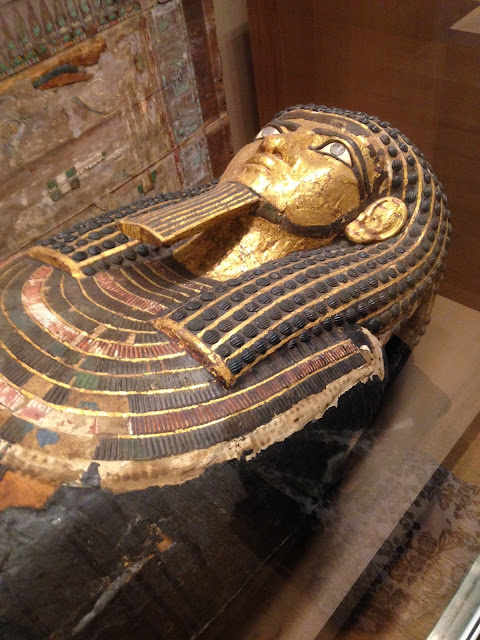Day 418 - Goya and Fuseli
July 19, 2025
I was ambivalent about going to the Met today - not that I had anything much better to do - but what a spectacular return it turned out to be! Gallery 641 contains 11 canvases by Goya, all of them notable. These include “Two Majas on a Balcony” - although I learn that the Met version may have been painted by a follower. The original is in a private collection, and I'm annoyed that it's inaccessible to the general public. Also in the gallery is an old friend, "Don Manuel Osorio, " a work I've known since I was young and first saw it in Betsy Chase's wonderful book on art for children. Goya depicts the little boy, dressed in bright red and holding his pet magpie on a leash, while three cats - one of which is indicated only by a black form and shining eyes - crouch watchfully, either hypnotized by or preparing to pounce. on the bird. A number of portraits show Goya’s skilled brushwork, especially in painting lustrous fabrics.
Today’s selection, though, is not by Goya but is instead an arresting and troubling work by Henry Fuseli. Painted in 1796 and measuring approximately 72 inches wide and 40 inches high, it's entitled,
“The Night-Hag Visiting Lapland Witches.” The Night-Hag, a placard helpfully explains, was a name given to Hecate, the Greek goddess of witchcraft and magic. In this painting, a woman, presumably a witch, her breasts bared but her head covered by a black fur and her shoulders swathed in black, appears beside a sleeping baby; she grasps the infant's knee and gazes skyward, presumably at an image of Hecate. The woman seems to be standing at the top of a parapet that's being besieged by dimly seen armed figures, one of whom brandishes a short sword or dagger. The scene, I learn, is drawn from a passage in “Paradise Lost" in which Milton describes hellhounds as following Hecate through the night air to dance with witches, lured by the smell of infant blood. The palette is dark and the witch's skin tone is gray, in contrast with the rosy flesh of the child. Maybe because I've been reading recently about the Kishinev Massacre, which was inspired by the blood libel that Jews needed the blood of Christian children for the Passover ritual, the picture especially conjures up for me an air of malice and danger. I'm not alone in finding the work riveting. I note that a number of people wandering through the gallery stop to look at it.
It’s easy to speculate that the curator placed the Fuseli here because it’s suggestive of the horrors that Goya captured in his “Disasters of War" prints.




Comments
Post a Comment